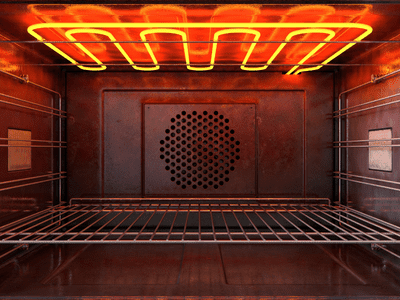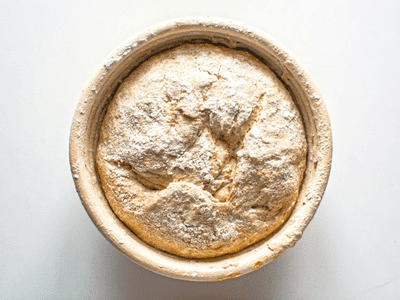Can you proof on oven? Before you can bake your dough and turn it into a delicious fluffy loaf, you need to go through proofing, where you let your dough raise and give your bread that fluffy texture inside. Let’s learn more about it in this article.
Why do we need a proofer in the first place?

Yeast and enzymes in bread dough react at different rates depending on temperature and humidity. Changes in proofing conditions affect how long the dough takes to rise, as well as the texture and flavor of the bread. Controlling the temperature and humidity in the proofing environment can alleviate much of the stress associated with bread timing and quality control.
Professional bakers wheel dough racks into a walk-in proofer. Each proofer can accommodate 1 to 12 racks at a time. When the dough is ready for baking, it is removed from the proofer via the exit door opposite the entrance. As new racks are loaded, the rack that has been in the proofer the longest will be pushed to the exit by a conveyor belt.
You also need to know the right temperature to bake your bread. So, here’s How to Know the Right Bake Bread Temperature.
But it’s not so simple at home! Trying to follow the proofing timings from a recipe without a proofer is nearly impossible. We never know how long it will take a new recipe to rise because we don’t have control over the proofing environment. Or do we…?
Can I proof on oven?
Can you be proofing bread in oven? Yes! Many high-end ovens include a dough proofing setting, but if yours does not, you can still use it as a home proofing box or homemade bread proofing oven. Set the thermostat to a low setting. This is frequently before any numbers appear on the dial. If you are unable to do so, simply turn on the light to gently warm the oven. It will take approximately an hour to warm up in this manner, but you can speed it up by adding a cup of boiling water to the oven.
A thermometer is required to monitor the temperature of your oven while it is being used as a proofer. An instant-read infrared thermometer is the best tool for this, but a temperature probe can also be used. If you’re using a probe, leave it in the oven and turn it on every time you open the door to make intermittent checks.
How to Proof on Oven

To do oven proofing, begin by adjusting an oven rack to allow for both a proofing basket (bread tin) and a deep-edged ovenproof container beneath it.
Turn on the light or set the thermostat to 30-35 degrees Celsius (86-95F) for the bread proofing temperature.
Place the dough in the proofing basket and shape it.
Place the dough on the shelf, pour a cup of hot (50C (122F)) water into the bottom container, and close the door.
All you have to do now is check the proofing ovens temperature and humidity every 30 minutes. When the dough begins to dry out, replace it with fresh water.
When you proof dough in oven, remember to remove the dough before it has fully proofed to allow you to preheat the oven. If the dough disappears too quickly, you may need to chill it in the fridge. Remember to cover the dough once it has been removed from the humid environment to prevent it from drying out.
How long does it take for bread to proof in the oven?
How long to proof bread in oven? It is determined by the quantity and type of levain used.
Bread proofs much faster in the oven than on the counter, especially if you live in a cool climate. The bread should rise in about 112-2 hours.
Do you cover the dough while it proofs in the oven?
When proofing dough on the counter, cover it to prevent air from drying out the skin on the dough’s outer surface (skinning up). When proofing in the oven, we can substitute a container of warm water. This raises the humidity in the bread proofer oven, eliminating the need to cover the dough.
Can I proof bread in the microwave?

Now that you know how to proof dough in oven, can you proof in microwave? Yes. Place the dough in the microwave and close the door slightly ajar so that the light remains on. You may find yourself needing to wedge a piece of cardboard in the door. The light will gently warm the proofing area of the dough. You can increase the humidity and temperature by placing a cup of hot water inside! Your dough may dry out inside depending on how open your door is to keep the light on, so you may need to cover it to keep it from drying out.
Is there a more precise method for proofing bread at home?
The temperature of the proofing chamber will rise if we use hot water to increase humidity. You might be tempted to use boiling water, but this can overheat your home proofer. The temperature of your DIY proofer will decrease as the water cools. Temperature swings can degrade the quality of the proofing, and you’ll find yourself constantly adjusting the conditions by opening the door and adding hot water to cool or heat the environment.
This can be difficult, and there may be times when we want to slowly proof our bread by lowering the temperature. Preheat the oven while the dough is proofing! Using the oven to proof bread has some drawbacks… Especially when only one oven is available!
If this describes you, the best solution is to purchase a home proofing box. The Brot & Taylor home proofer allows you to precisely set the temperature, giving you the same control as a professional baker. No more having to precisely time the proofing so that you can preheat the oven. There are no temperature variations. Perfect control to make home baking bread easier.
In the winter, how do you proof dough?
In the winter, you’ll most likely need a warm place to proof your dough. An oven with only the light on or on low heat, a microwave with the light on, near a radiator, in an airing cupboard, or a home proofer are all suitable conditions.
Rounding up proofing bread in the oven
We’ve covered the fundamentals of how to proof bread in the oven in this brief guide. Remember that you will want to tweak my method to fit your routine, environment, and baking styles (as with most things in bread baking). You may want to use more water, hotter water, no water, warmer temperatures, or you may discover that turning the oven on heat bakes your bread even if the temperature is set to a low setting!
The first few times you try this, you may need to get your temperature probe out to check what’s going on. This is what I needed to do in order to master this process. However, once you gain confidence, proofing bread in the oven becomes second nature! If you’re new to bread baking, check out the Science to Bread Temperature.
Have you ever used this method to proof bread? If so, how did you discover it? Please let me know in the comments section below so that we can share it with the community.